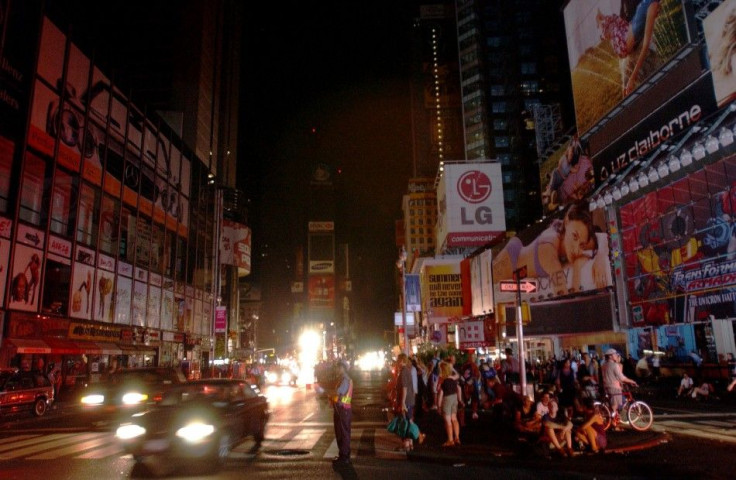New York Heat Wave: Is Another Blackout Coming?

As a potentially deadly heat wave scorches 32 states, utilities companies are taking extra precautions to ensure added strain on the electrical grid does not trigger a repeat of the 2003 blackout that temporarily plunged cities from New York to Detroit into darkness.
Temperatures in many places are approaching triple digits -- 100 degrees Farenheit -- and businesses and households are responding by turning up the air conditioning. Utilities companies are turning on backup power plants, delaying maintenance and employing technology that can sense the slightest variations in temperature.
These are the days everyone wants to have their ACs on, their computers going while they watch TV, Jon Jipping, Chief Operating Officer of ITC Holdings Corp., a transmission grid operator that owns grids in Iowa, Michigan and four other Midwest states, told The Associated Press. These are the days we get ready for.
When the electrical grid is running at capacity, the risks multiply. Equipment can get overheated, power surges threaten to cripple transformers and mechanisms designed to protect equipment can cut off power.
In August of 2003, a power line in Ohio sagged against a tree, something caused by the strain of too much electricity coursing through it, and switched off. That small event touched off a cascade of power failures that blacked out huge swathes of the United States and caused the now-infamous 2003 New York blackout. New York City also had a commerce-crippling blackout in 1977, as well.
That demonstrated the perils a heat wave creates for the electrical grid, but it also underscored concerns that the system supplying power to the United States was in desperate need of an upgrade. Bill Richardson, then the governor of New Mexico, criticized the antiquated system by calling the U.S. a major superpower with a third-world electrical grid.
The Obama administration has directed some effort at modernizing the country's electrical infrastructure -- for example, the American Reinvestment and Recovery Act allocated $3.4 billion dollars to invest in smart grid technologies that adapt to consumer behavior. A recent report by the Electric Power Research Institute predicted that the costs of updating the grid, about $476 billion over the next 20 years, would be far outweighed by up to $2 trillion in customer benefits in the same period.
© Copyright IBTimes 2024. All rights reserved.





















